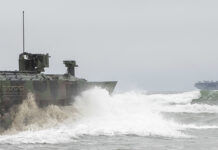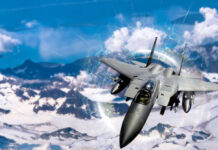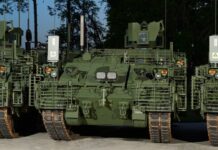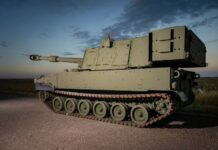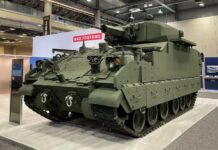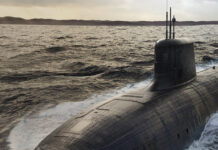BAE Systems has been selected by Boeing to upgrade and modernise the vehicle management system computer (VMSC) for the US Navy’s MQ-25 Stingray unmanned aerial refuelling system, the company announced on 12 February 2024.
The technology refresh will increase computing power and address obsolescence issues, providing the unmanned aerial tanker with an integrated solution that improves aircraft performance and allows for future capability growth.
BAE Systems’ next-generation VMSC controls all flight surfaces and performs overall vehicle management duties for Boeing’s autonomous MQ-25, which is the navy’s first operational carrier-based unmanned aerial vehicle (UAV) and is designed to provide a much-needed aerial refuelling capability. It also aims to relieve the refuelling mission workload conducted by the navy’s F/A-18E/F Super Hornet aircraft, enabling ordnance to replace refuelling stores on the Super Hornets’ pylons.
The VMSC upgrade will use quad-core processors to increase computing power while optimising the size, weight, and power footprint on the aircraft. The multi-core processor selected for the MQ-25 VMSC has recently completed qualification on another US military platform, thereby reducing cost, schedule, and integration risk for this programme, BAE noted in a press release.
The upgrade will deliver more capability by replacing multiple other onboard computers, improving aircraft reliability and reducing total lifecycle cost of ownership for the navy. The new VMSC also provides growth capability to support future MQ-25 mission systems, such as intelligence, surveillance and reconnaissance (ISR) technologies, and lays the foundation for all future carrier-based UAVs by pioneering the cutting-edge manned-unmanned teaming (MUM-T) operational concept.
BAE Systems also provides the identification friend or foe (IFF) system for the aircraft.
“BAE Systems is a leader in flight-critical systems and solutions,” Corin Beck, senior director of Military Aircraft Systems for Controls and Avionics Solutions at BAE Systems, was quoted by the company as saying. “Our upgraded VMSC for the MQ-25 will deliver advanced functionality, enabling this platform to execute today and tomorrow’s critical missions, while also reducing the amount of hardware required on the aircraft through consolidation into this computer.”
The MQ-25 Stingray emerged from the US Navy’s Unmanned Carrier-Launched Airborne Surveillance and Strike (UCLASS) programme and subsequent Carrier-Based Aerial-Refueling System (CBARS) programme. It first flew on 19 September 2019 and conducted its first aerial refuelling test on 4 June 2021.
The first MQ-25 squadron, Unmanned Carrier-Launched Multi-Role Squadron Ten (VUQ-10), was established on 01 October 2022 at Naval Air Station Patuxent River, Maryland, and the type is now scheduled to achieve an initial operational capability in 2026.
Although only seven MQ-25s have currently been ordered, and production of the aircraft has been delayed, the current programme of record calls for the US Navy to acquire 69 MQ-25s (in addition to four engineering development models (EDMs) and three system demonstration test articles (SDTAs)).

NORFOLK, Va. (Nov. 10, 2021) The U.S. Navy and Boeing conducted ground testing of the MQ-25 Stingray at Chambers Field onboard Naval Station Norfolk, Virginia. The MQ-25 Stingray is an unmanned aerial refueling aircraft. (U.S. Navy photo by Mass Communication Specialist 2nd Class Sam Jenkins)







